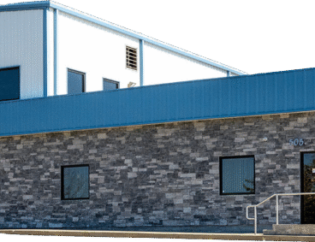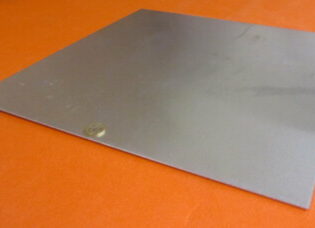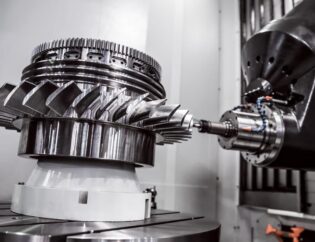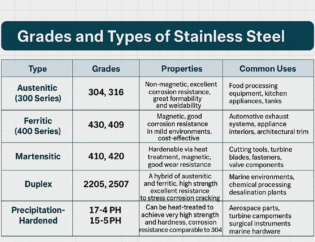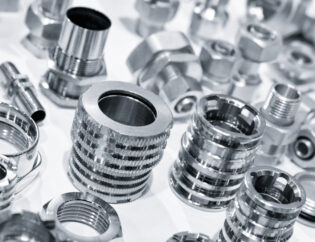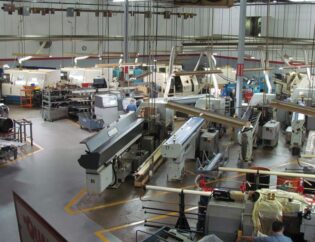Reaming machining is a critical process in precision engineering, enhancing the accuracy and finish of drilled holes. This guide delves into the intricacies of reaming, exploring its significance in various industries, from automotive to aerospace. Understanding reaming not only improves product quality but also optimizes manufacturing efficiency.
Readers can expect to learn about the different types of reamers, their applications, and best practices for effective use. We will cover essential techniques, tools, and troubleshooting tips to ensure successful reaming operations. By the end of this guide, you will be equipped with the knowledge to implement reaming effectively in your projects, enhancing both precision and productivity.
What is Reaming: Working Principle, Applications, Advantages, and More
In the field of CNC machining parts manufacturing, reaming is an essential hole processing method widely used to improve the dimensional accuracy and surface quality of holes. CNC reaming uses precise numerical control technology, utilizing reamers to perform minute cutting on the workpiece hole wall to achieve high precision and high surface finish. This article will delve into the working principle, applications, advantages, and disadvantages of reaming. It will also introduce different types of reamers, their selection methods, and techniques and precautions for reaming operations.
Understanding Reaming
Reaming is a precision machining process that refines the dimensions and surface finish of an existing hole. This process employs a cutting tool called a reamer, which is inserted into the hole to slightly enlarge it. The reamer serves to enhance the size of the hole, improving its roundness, straightness, and surface finish to meet tight tolerances.
Technical Features of Reaming
| Feature | Description |
|---|---|
| Precision | Achieves high dimensional accuracy, typically IT9 to IT7 levels. |
| Surface Finish | Improves surface roughness, reaching Ra values of 3.2 to 0.8 μm. |
| Efficiency | More efficient than other methods for small holes, reducing processing time. |
| Versatility | Can process various hole shapes, including round and tapered holes. |
| Cost-Effectiveness | Simple process with low operational costs, suitable for mass production. |
Types of Reamers
Reamers come in various types, each designed for specific applications and materials. Below is a comparison of different types of reamers:
| Type | Description |
|---|---|
| Hand Reamers | Manual tools for enlarging holes, suitable for small workpieces. |
| Floating Reamers | Automatically align with the hole, ideal for deep holes requiring precision. |
| Shell Reamers | Used for large-diameter holes, providing economical solutions for mass production. |
| Carbide Reamers | High hardness and wear resistance, suitable for tough materials like stainless steel. |
| Short Helical Reamers | Designed for better chip evacuation, reducing cutting force fluctuations. |
| Chuck Straight Flute Reamers | Quick tool changes, suitable for batch production. |
| Taper Pin Reamers | For processing tapered holes, ensuring a good fit for pins. |
| D-MARK Reamers | High-precision tools for aerospace and precision machinery applications. |
Advantages and Disadvantages of Reaming
Advantages
- High Precision: Reaming significantly improves the dimensional accuracy of holes.
- Efficiency: It is relatively efficient compared to other hole processing methods.
- Versatility: Reamers can process various hole shapes, meeting diverse needs.
- Cost-Effective: The process is simple and low-cost, making it suitable for mass production.
- Surface Finish: Achieves a high surface finish, enhancing the overall quality of parts.
Disadvantages
- Requires Pre-drilled Holes: Reaming must be performed on pre-drilled holes, adding to processing steps.
- Tool Wear: Reamers are prone to wear and require regular inspection and replacement.
- Dimensional Control: Requires strict control of parameters to avoid deviations.
How to Ream: Step-by-Step Guide
- Fix the Workpiece: Secure the workpiece on the machine tool for stability.
- Pre-drilling: Use a drill to create a foundation for reaming.
- Apply Lubricant: Use an appropriate lubricant to reduce friction.
- Insert the Reamer: Align the reamer with the centerline of the hole.
- Reaming: Start the machine and allow the reamer to cut until the desired size is achieved.
- Check Dimensions: Measure the hole’s dimensions to ensure accuracy.
Applications of Reaming
Reaming is widely used in various industries, including automotive, aerospace, machinery manufacturing, and electronics. It plays a crucial role in ensuring high-precision and high-surface-quality holes in parts. For instance, companies like www.machining-custom.com and waykenrm.com utilize reaming in their CNC machining services to meet stringent quality standards.
Achieving Strict Tolerances with Reaming
The reaming process can achieve precise control over the dimensional and shape accuracy of holes. By selecting the right reamer and processing parameters, holes can be processed to meet strict tolerance requirements, which is crucial for ensuring the fit accuracy and overall performance of parts.
Common Issues and Solutions in Reaming
Poor Fit Quality
Problem: Unsatisfactory fit between the hole and mating parts.
Solution: Check reamer accuracy, ensure pre-drilled hole standards, and adjust cutting parameters.
Tool Damage
Problem: Chipping or breaking of the reamer.
Solution: Use appropriate reamer materials, control cutting parameters, and maintain cutting fluid quality.
Production Time Loss
Problem: Extended production time due to tool wear.
Solution: Regular maintenance of machines and tools, optimize tool selection, and implement effective production planning.
Tips and Precautions for Reaming Operations
- Reamer Feed and Speed: Select appropriate feed speeds and cutting speeds based on material.
- Alignment: Ensure precise alignment of the reamer with the workpiece hole.
- Reamer Resharpening: Regularly resharpen the reamer to maintain accuracy.
- Inventory Management: Manage tool inventory to ensure sufficient backup tools.
- Avoid Distractions: Focus during operations to ensure safety and quality.
Conclusion
Reaming is a vital precision machining process that enhances the quality of holes in various applications. By understanding the types of reamers, their technical features, and best practices, manufacturers can achieve high precision and surface quality in their products. Companies like www.ultirapid.com and www.boyiprototyping.com emphasize the importance of reaming in their machining services, ensuring that they meet the demands of high-precision industries.
FAQs
Related Video
What are the applications of the reaming process?
Reaming is widely used in manufacturing to improve the precision, surface quality, and shape accuracy of workpiece holes, particularly in automotive and aerospace industries.
Is reaming difficult?
Reaming is not complex, but achieving high precision requires operator skills and experience in controlling cutting parameters and ensuring tool sharpness.
Can a reamer straighten a hole?
Yes, a reamer can correct slight misalignments depending on the degree of misalignment and the reamer’s rigidity.
Which materials are suitable for reaming?
Reaming is suitable for various materials, including metals and plastics, with different reamer materials and cutting parameters required for each.
What are the differences between reaming, boring, and drilling?
Drilling creates the initial hole, boring enlarges it for better accuracy, and reaming fine-tunes the diameter and finish for precision applications.

